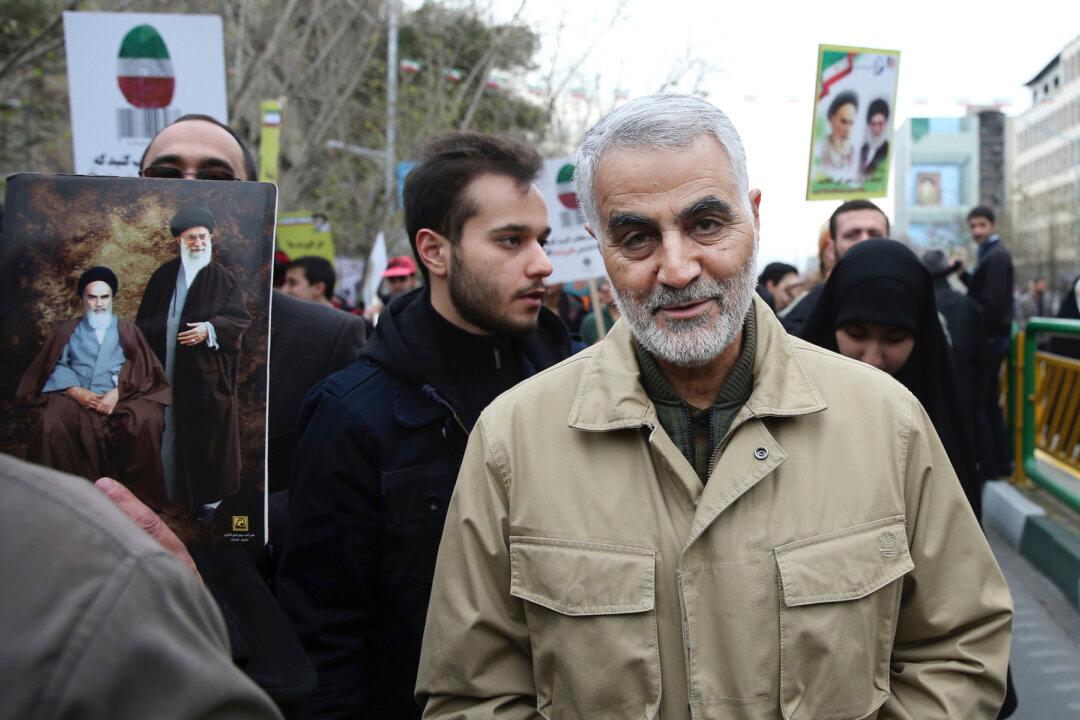The Iranian regime’s top military official, Qassim Soleimani (also Qassem Soleimani), was killed following reports of at least three Katyusha rocket strikes on an Iraqi military base and drone strikes near Baghdad International Airport early Friday morning.
Iraqi TV and three Iraqi officials confirmed that Soleimani, who was the head of Iran’s elite Quds Force or Jerusalem force, has been killed by an airstrike.




